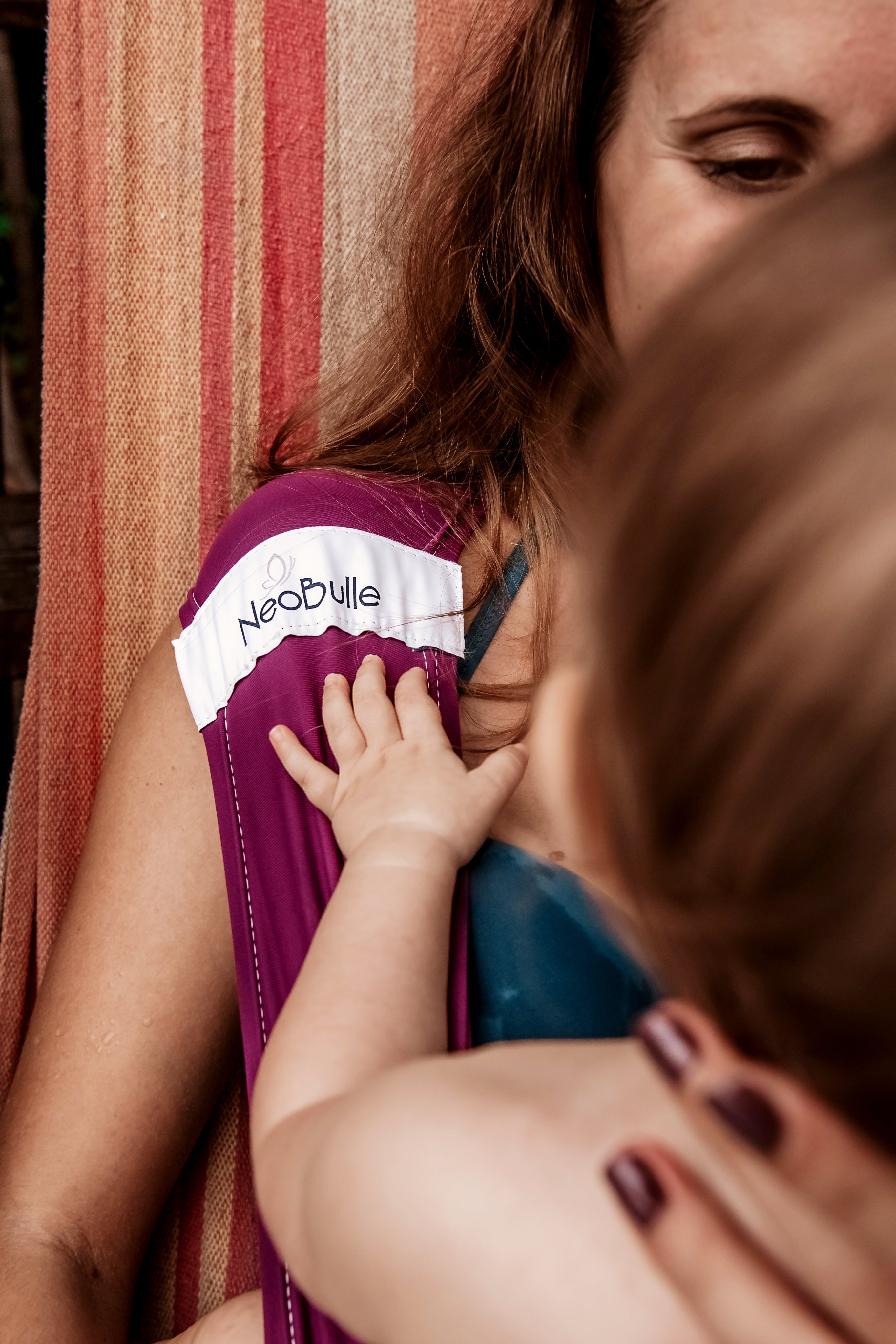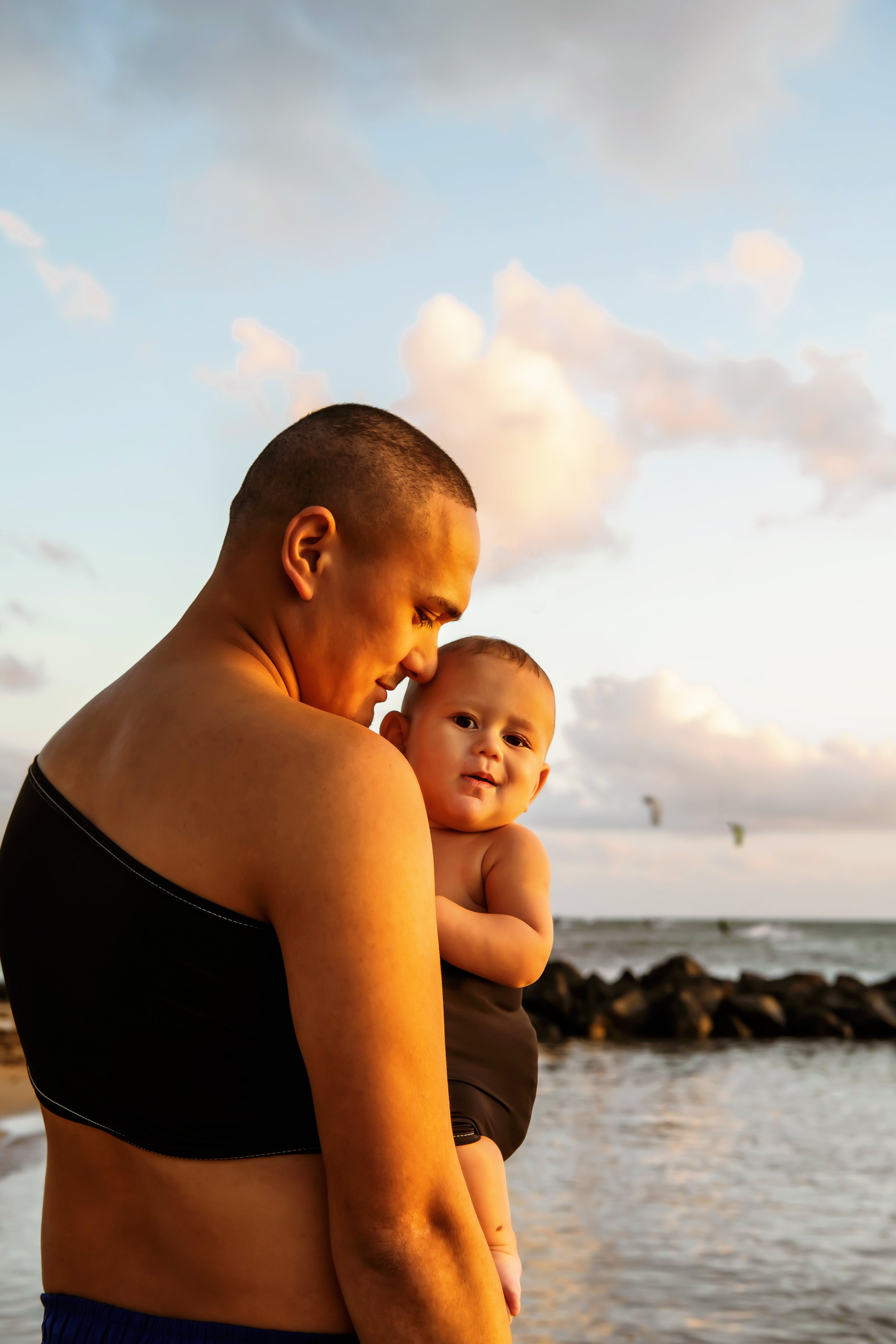Your little miracle will arrive soon and you want to carry her. You have read everywhere that the sling is ideal, but it scares you or doesn’t appeal to you at all. Don’t panic: the carrying market is very diverse and there are now preformed baby carriers perfectly adapted to the specifics of the newborn!
What should we pay attention to in order to choose well? We’ll explain everything to you!
The Hypotonic Newborn
At birth, the infant is completely hypotonic: to simplify, it is all soft, a bit like a rag doll, and is not capable of voluntary and controlled movements nor of simply stabilizing its body. This is mainly due to the immaturity of part of its nervous system (myelin sheaths, which help transmit nerve impulses, are not well formed), and also the muscles that have not yet been trained.
The tone of the newborn will follow the maturation of the myelin sheath: initially along the spine, which will allow axial tone development (around 3-4 weeks, you will notice that the baby begins to stabilize on its vertical axis), then along the arms and legs (about 5-6 months for the baby to voluntarily grasp something).
Carrying a newborn involves taking into account the lack of tone to offer an arrangement that compensates for it. In a carrying sling, precise fabric adjustments are used; in a baby carrier that doesn’t allow such fine tuning, you can play with 2 factors:
- The size of the panel
- The fit of the bodies
A baby carrier of the right size
A too-large baby carrier risks floating and gaping in the back of a small baby, not offering the necessary stability to compensate for the lack of precise adjustments: the newborn risks collapsing inside, which is not optimal for freeing their airways
To reduce the size of the panel, brands offer several options.
Option 1: using a reducer / cushion:
With a reducer or cushion, the panel itself is not adjustable, but the baby sits higher on the device, which artificially decreases the height. In this configuration, the baby’s feet cannot come out because the seat is too wide, so they remain inside. This causes a problem where the support under the soles of the feet stimulates a pushing reflex: the baby will automatically start pushing with their legs, and soon they may stand up inside the system. Generally, around 3 or 4 months, they will be too big for the reducer but too small for the main system, and you will be stuck.
The use of a reducer should always catch your attention: you are sold a baby carrier designed for a child of at least 6-8 months, trying to fudge so that it looks like it’s for a younger one. A more illustrative corollary: it’s like selling you a pair of shoes two sizes too big, claiming the foot will grow, and telling you to use insoles until it fits properly.
Option 2: offer adjustments on the panel:
Adjustments allow you to reduce the height and width of the back panel and adapt it to the actual size of the baby. This solution is more relevant because it allows for better overall adjustability of the system.
The limitation is that you cannot evolve a panel from birth to 4 years because the amount of material necessary to carry a larger child cannot be folded enough for the size to be small enough to stabilize a newborn. There are therefore baby carrier sizes, generally with ranges such as: birth/2 years, 3-4 months/3 years, 1 year/5 years.
A carrying system sold to carry from birth to 4 years must always catch your attention too! No material in baby gear is as adjustable because the needs of a newborn and a 4-year-old are too different. You need to change stroller, bed, car seat, etc. Carrying systems are no exception to this rule.
The fitting of bodies
The concept of body fitting is a key notion that involves finding a carrying height that allows the newborn to naturally align with the carrier’s body. This enables stability and is largely what allows physiologic carrying to avoid needing to hold the head because it rests on the chest. Respecting body fitting is essential as long as the child cannot support their back on their own! It is considered that sitting is well acquired (around 8-10 months if we want to be precise, when they can sit up alone).
Generally, to find the right position, aim above the woman’s breasts and the man’s pectorals: if the carrier is too low, the baby’s head ends up right in the middle and has no choice but to lean backwards or to the side to avoid it (it’s like putting two rigid cushions right on your head—you will try to go around them and won’t settle into them). The other consequence is that the baby, losing the necessary anchoring for stability, sinks.
While body fitting is quite intuitive for women, for men it initially requires a bit more reflection because it’s not natural to bring the child up on their body: you really need to aim as high as possible, as if you wanted their head nestled in the neck.









